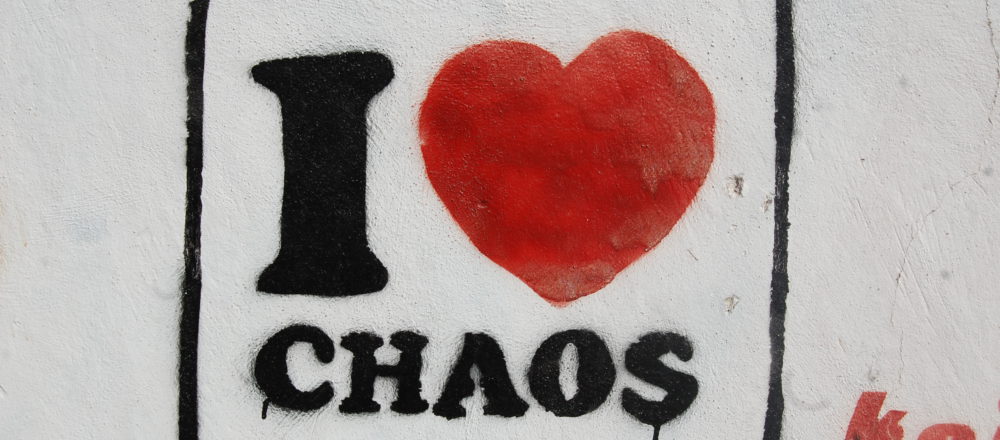By Marta Skrabacz
This article is part of our May issue, Human Rights and Money.
The use of the word “boycott” is taken from the eponymous Charles Boycott, a British land agent who worked in Ireland in County Mayo. Following several bad famines in 1879, Boycott was asked by the Land League to reduce his rents. In 1880, after attempting to serve several writs of eviction, he found himself the center of an economic boycott. Boycott was forced to employ workers from nearby towns to work for him. The situation only improved after the Land Act 1881 (UK) statutorily imposed fair-rent tribunals. Nowadays boycotts are still used similarly, to oppose actions by exerting pressure, whether economic or political, on groups or individuals in society.
In a more poetic sense, a boycott is a weapon that can create “mess and noise” by enacting a boycott, one forces the public to confront an issue.
Boycotts are by nature very public (and non-violent) gestures. The purpose of a boycott is to acquaint large groups of people with an issue, by attracting attention to it. As with any form of protest, the less “noise” made by the boycott, the less likely that it will be a successful protest. Recent boycotts have ranged from minor local issues to international conflicts.
A mere symbolic gesture?
Boycotts are very significant as a symbolic gesture; they are evidently a form of uniting opposition against a group. A recent example in Australia was the opposition to Transfield Services; a company hired by the Australian Government to operate the immigration detention facility in Nauru and the Manus Island facility in Papua New Guinea. Several artists threatened to pull out of the Biennial at the Sydney Festival after learning that Transfield Services was a sponsor.
A statement, issued by the 28 artists who threatened to boycott the festival, stated they, “do not want to be associated with these ‘practices’, referring to the mandatory detention of asylum seekers, which in their eyes is ‘ethically indefensible’ and ‘in breach of human rights’n” The strong dissent on the topic of government policy regarding asylum seekers was expressed by rejecting the sponsorship. The boycott resulted in the withdrawal of Transfield Services as sponsor and the subsequent resignation of Luca Belgiono (director of Transfield Holdings) as chairman of the Biennale of Sydney.
This boycott was largely a symbolic gesture. The artists withdrawal from the fair was impressionistic and representative of the interests of their supports and followers. The boycott did very little to target the root issue of their boycott target the impressionistic and repre no legislative changes were made. Biennale took action because it was in danger of losing its product as opposed to adhering to a moral standard the artists sought to enforce. It infers that the boycott is employed as a weapon but it may not be an instrument of acquiring results in a forceful fashion.
An effort to stimulate dialogue?
While boycotts may not be the right vehicle for pushing legislative changes, their power as symbolic gestures aren’t necessarily without reward. By embracing confrontation, boycotting can be used as a sword to challenge decisions and actions made by groups in positions of power. For vocal boycott supporter and musician, Conor Oberst, “a boycott is, inherently, a blunt instrument. It is an imperfect weapon, a carpet bomb, where all involved would prefer a surgical strike.” Boycotts posit an issue squarely into the public hands, grabbing media attention, but it doesn’t distribute neutral information about the conflict. However this is not its purpose, and for that it cannot be criticised.
Michael Curtis, Professor Emeritus at Rutgers University, is critical of boycotts, describing them as “simplistic responses to complex, unresolved problems.” And some boycotts may be; they are physical acts of denigration or a cluster of public voices, not a structured and formalistic debate between audiences akin to a Q&A audience. The Boycott, Divestment and Sanctions movement (BDS) has been criticised on this very issue. The movement is a global campaign that called “for a campaign of boycotts, divestment and sanctions against Israel until it complies with international law and accords Palestinians their human rights.” The movement is comprised of smaller boycotts and activism, which create a dialogue from a spectrum of academic to economic. The two that are primarily discussed in this article are the Max Brenner boycott and the Sodastream boycott. Each respectively shed perspective on the concurrent success of BDS movement.
The ongoing boycott of Sodastream is part of the BSD movement. Sodastream, producers of a kitchen gadget that creates popular soft drinks, are one of many companies criticised for their financial investment in Israel. Specially, the criticism stems from the fact that Sodastream operates one of its manufacturing plants in the West Bank settlement of Mishor Adumim. Israeli settlements in the West Bank are regarded as illegal under international law by the International Court of Justice. Meaning, by building manufacturing plants and settling new immigrants in that area, they arguably “constitute a flagrant violation of the Fourth Geneva Convention” which bans the transfer of population into occupied territory. However, Sodastream CEO Daniel Birnbaum argues that his “loyalty to 500 Palestinians, who are among the plant’s 1,300 employees” is the reason for continuing operations because they will suffer financial detriment should the plant move out of the West Bank. This case exemplifies how difficult it is to see the long-term effectiveness of an economic boycott.
Professor Curtis uses the situation to present an alternative strategy to the boycott. He suggests people demand better governance from their political leaders to “normalise political relations”. He believes boycotts undercut the gradual progress to peace because they are a protest that doesn’t give way to concession, negotiation or discussion. Boycotts work fantastically well as a gateway for introducing confrontation. And arguably there may be more effective methods, there may be methods that address the complexity of given situations, but boycotts do produce noise and mess, and that is the point.
In this sense, boycotts have been criticised and described as a weapon against dialogue. Meaning that boycotts form a wall of opposition by refusing to find concession. We must be aware of boycotting as a limited form of expression; they seek to bring attention to a cause.
When confronted by individuals who do not agree with a given boycott, people are often quick to point the selective hypocrisy in protest. They ask, why protest one issue over another? But the question really is, does boycotting one thing and not another invalidate a particular boycott?
Contrary to what critics say, boycotts are a weapon for dialogue. They confront and drag issue into the public eye forcing dialogue between supporters and opponents of the boycott. The primal driving force of a boycott is the desire to educate the public on the alleged wrongdoing. Case in point, the ongoing Max Brenner boycotts had very little to do with the chocolate shop itself. The target was the parent company, the Strauss Group, a food manufacturer in Israel. The company had openly supported and extended care to the Israeli military. The boycotts did not greatly harm either Max Brenner or Strauss Group economically, but focused on educating public consciousness about the Israeli Government’s breach of international humanitarian law in the Occupied Palestinian Territories.
Expression of economic freedom?
Boycotts are a greater form of expressing economic freedom. This was particularly evidenced in a boycott by dating site OkCupid. Visitors to OkCupid on Firefox were greeted with a message asking them to switch browsers. This was in response to Brendan Eich’s new appointment as CEO of Mozilla, the software responsible for the Firefox browser. In 2008, Brendan Eich donated $1000 in support of Proposition 8, a ballot initiative seeking to ban gay marriage in the state of California. There’s no doubt that OkCupid benefited from media coverage of the boycott. Yet, the company still exercised a fundamental right of economic freedom, by directly campaigning to convince internet users to abstain from using Mozilla. It is understandably difficult to align the corporate values of a company with those of the mass public. Mozilla received significant criticism due to its appointment of Eich despite ready claims of its diversity and policies towards openness. Following the incident, Mozilla released a statement saying, “diversity is core to who we are”.
“Dollar voting” or “moral purchasing” is to see boycotting as a method of ethical consumer activism. Boycotters demonstrate how significant the right of economic freedom is, allowing groups to flourish and giving society the right to publicly oppose and expel undesirable or harmful corporations. Brendan Eich was subsequently forced to resign after the boycott; however, Mozilla Foundation employee Erin Kissane defended the action by saying, “a CEO is a symbol and Mozilla’s work is made cohesive by an active mission, rather than by a mandate to make as much money as possible.” The forced resignation by Eich demonstrated the power of boycotts as both an economic weapon as well as a symbolic gesture.
Boycotts form a small part of the social licence of protesting, though arguably their effectiveness is limited, if successful, they are large whirlwinds of “noise”. They might prove to be dangerous weapons if not wielded correctly, but ultimately passivity and silence in the face of adversity is far more dangerous.
—
Marta Skrabacz is a student at Monash University. Currently, she is completing a law degree, focusing in human rights and international law. She completed her undergraduate honours year in 2013 with a thesis in medieval social theory.



